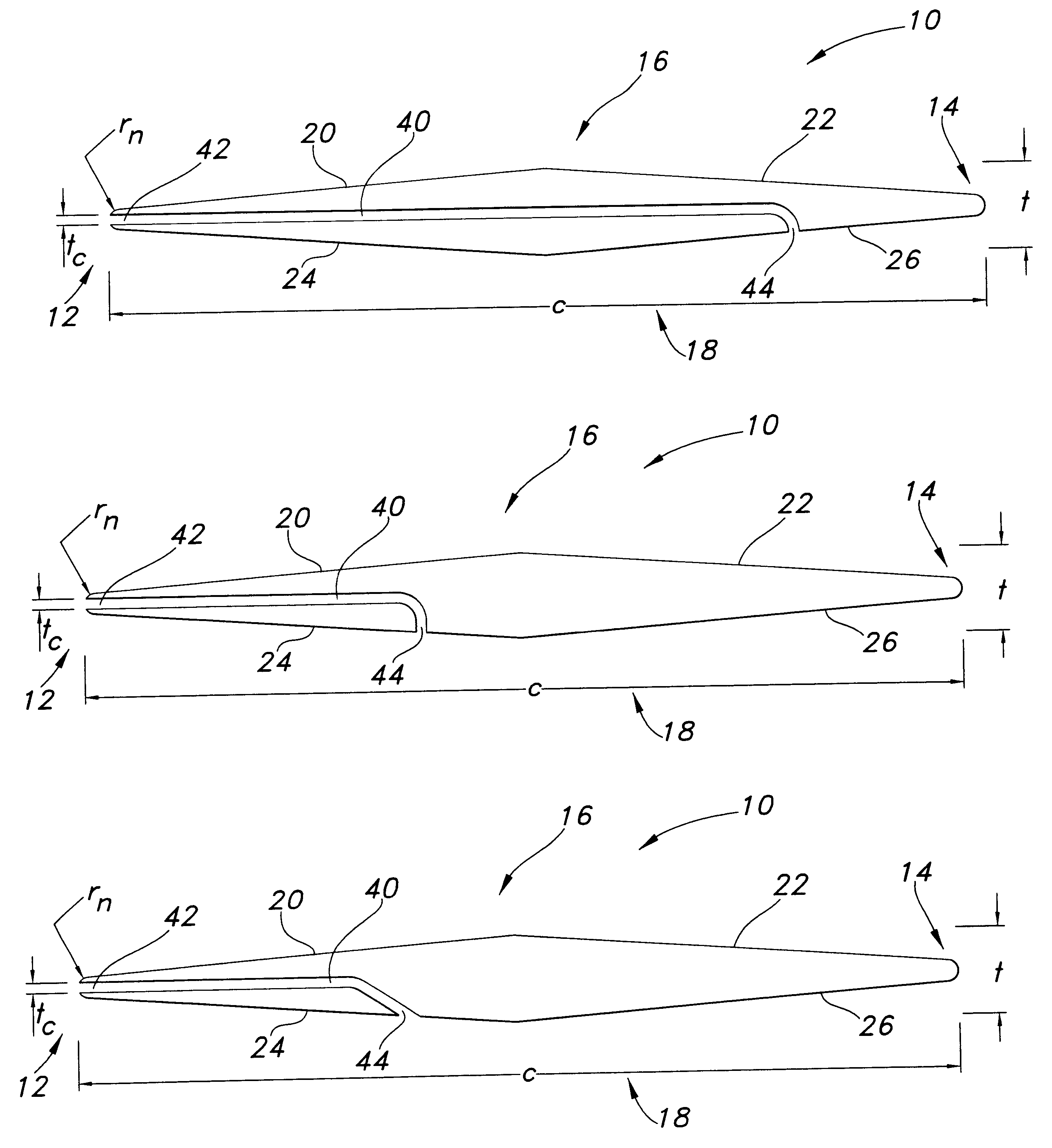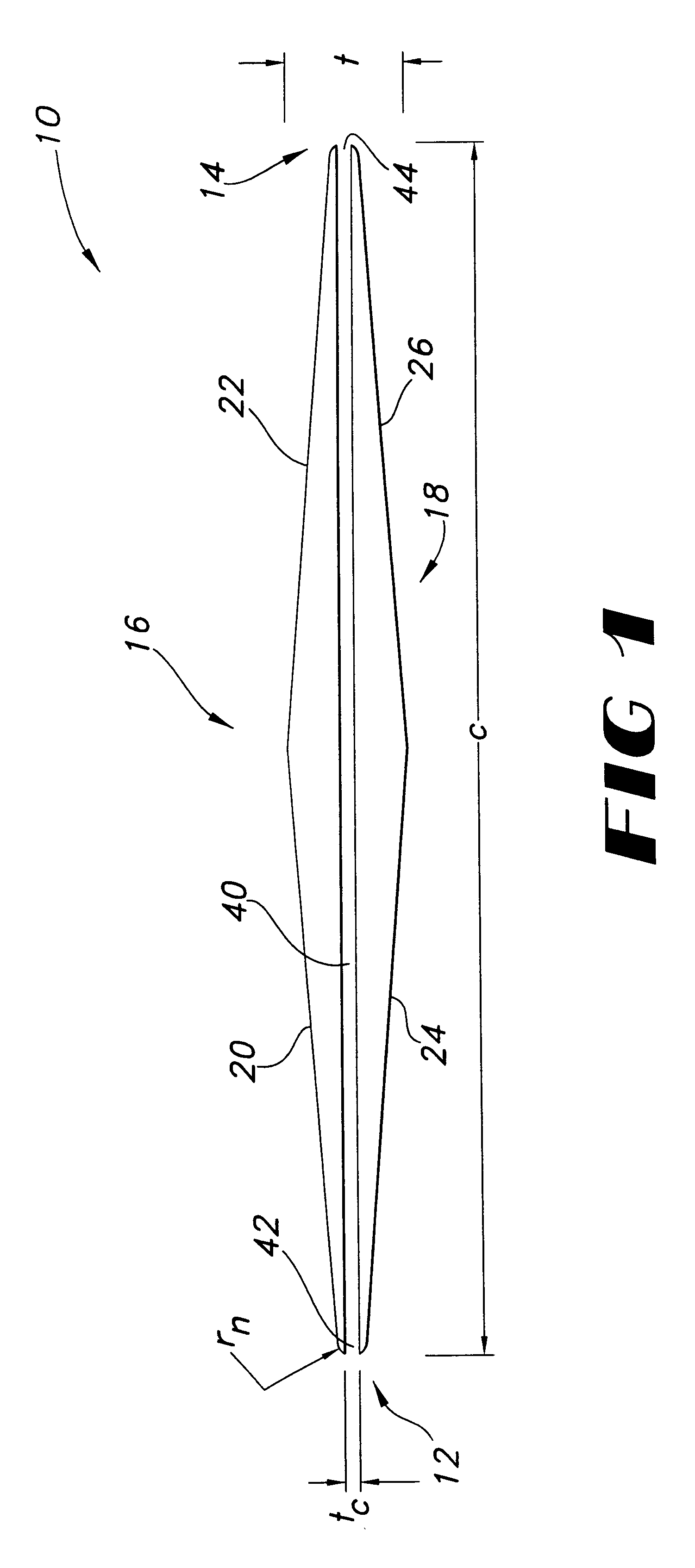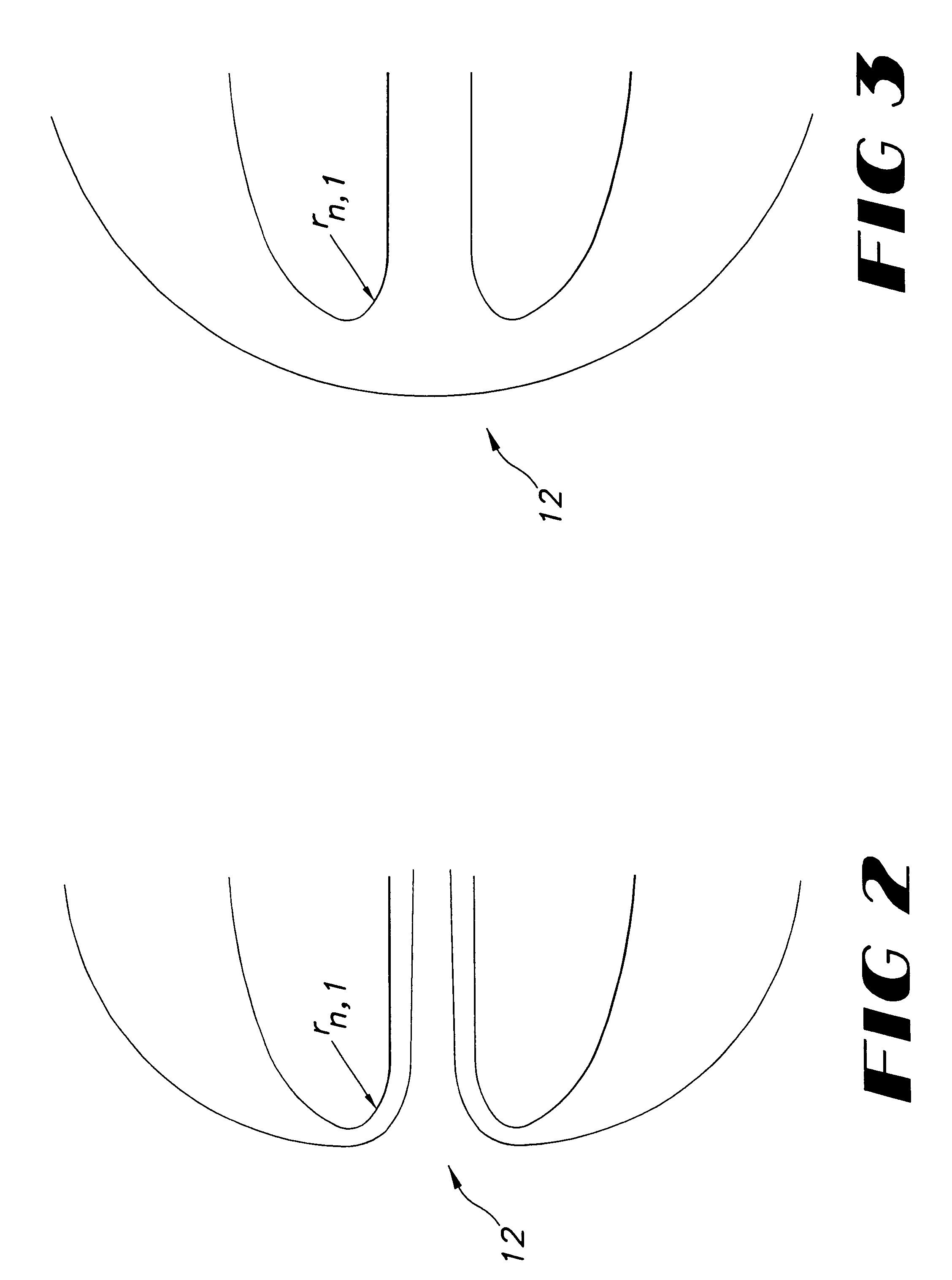Leading edge channel for enhancement of lift/drag ratio and reduction of sonic boom
a leading edge channel and lift/drag technology, applied in the field of supersonic or hypersonic body sections, can solve the problems of increasing fuel expenses, affecting the performance of aircraft,
- Summary
- Abstract
- Description
- Claims
- Application Information
AI Technical Summary
Problems solved by technology
Method used
Image
Examples
first embodiment
For certain applications, as described in greater detail below, it has been found desirable to provide an aerodynamic body with a passive airflow channel which can be selectively opened and closed depending upon the flight conditions. FIGS. 7-9 show several closure mechanisms 100 for enabling selective opening and closure of the channel 40 at the leading edge 12 of an aerodynamic body. FIGS. 7a and 7b show the opened and closed configurations, respectively, of a closure mechanism 100. This embodiment of the closure mechanism 100 generally comprises a flat plate 102 hingedly connected to the lower nose portion of the aerodynamic body, adjacent the entrance to channel 40, by means of a hinge 104. Actuating means 106, such as a hydraulic or pneumatic cylinder, are provided between the aerodynamic body and the plate 102 for moving plate 102 between the channel open (FIG. 7a) and channel closed (FIG. 7b) positions.
second embodiment
the closure mechanism 100 is shown in its opened and closed positions by FIGS. 8a and 8b, respectively. This embodiment of the closure mechanism comprises an angled closure gate 110, hingedly connected to the aerodynamic body by means of a hinge 104. Actuating means (unshown) are provided for moving the angled closure gate 110 between its opened and closed configurations. The portion of the angled closure gate 110 which blocks the channel 40 in the closed configuration can be curved to generally match the contour of the leading edge 12 of the aerodynamic body.
A further embodiment of a closure mechanism 100 is shown in its opened and closed positions by FIGS. 9a and 9b, respectively. In this embodiment, a rotating closure element 115 is pivotally mounted adjacent the leading edge 12 of the aerodynamic body. The rotating closure element 115 is preferably generally cylindrical, having a slot 117 provided through its central portion. A section of flexible duct 119 can be provided to con...
PUM
 Login to View More
Login to View More Abstract
Description
Claims
Application Information
 Login to View More
Login to View More - R&D
- Intellectual Property
- Life Sciences
- Materials
- Tech Scout
- Unparalleled Data Quality
- Higher Quality Content
- 60% Fewer Hallucinations
Browse by: Latest US Patents, China's latest patents, Technical Efficacy Thesaurus, Application Domain, Technology Topic, Popular Technical Reports.
© 2025 PatSnap. All rights reserved.Legal|Privacy policy|Modern Slavery Act Transparency Statement|Sitemap|About US| Contact US: help@patsnap.com



